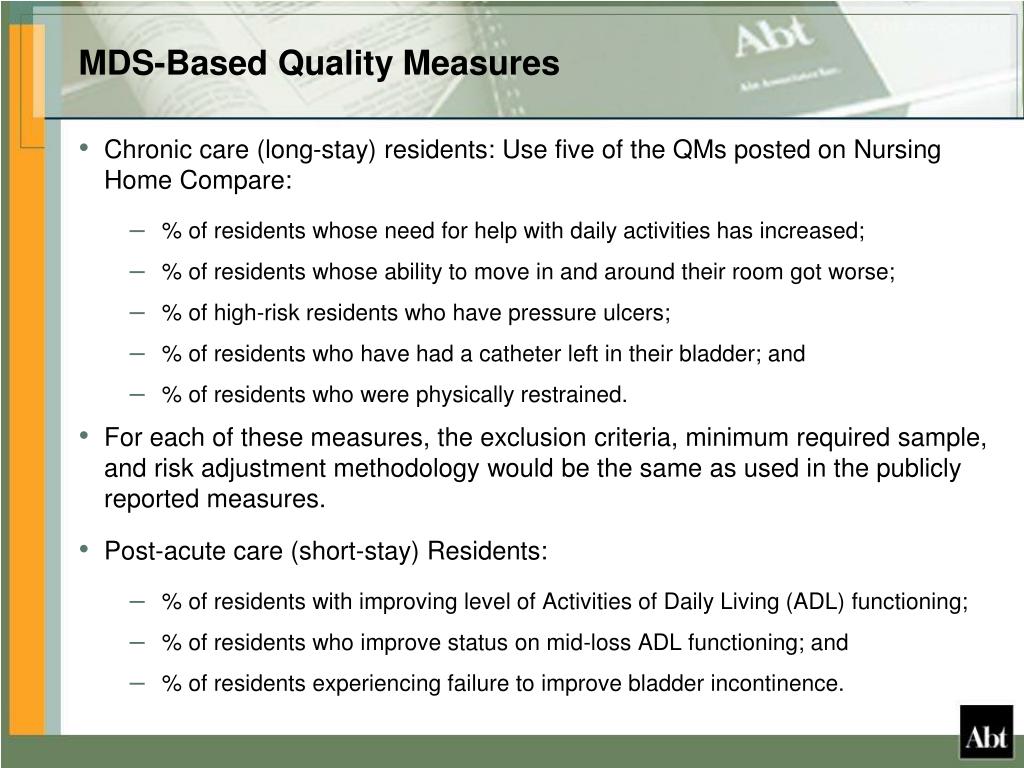
However, the overall welfare implications of these report card efforts are unclear. This interest has given rise to several public and private provider health plan report cards, including nursing home report card initiatives. Since the late 1980s, there has been increasing interest in providing useful information to consumers regarding the quality of care across the medical care sector. The patient is often neither the decision maker nor able to easily evaluate quality or communicate concerns to family members and staff. Although nursing home care is fairly nontechnical in nature, monitoring of care can often be difficult, and the learning period may be nontrivial relative to the length of stay in some instances.

Asymmetric information about quality is present in health care markets ( Arrow 1963), and the lack of quality information in the nursing home industry is thought to be particularly acute ( Hirth 1999 Chou 2002). Furthermore, if consumers have difficulty assessing quality, then it diminishes the incentive for firms to invest in improving quality. If the quality of a good is difficult to assess, consumers and sellers may have difficulty agreeing on a price. By clicking on the aforementioned link you will leave the Access and Quality in VA Healthcare site and be directed to the VA Quality of Care website.It is well known that the lack of available consumer information about product quality can lead to poor market outcomes ( Akerlof 1970). For More Information Additional VA quality scores can be found on the VA.gov Quality of Care website within the Your VA Quality Scores webpage. To learn more about CMS patient survey ratings, please visit CMS Care Compare’s patient survey page.
CMS NURSING HOME COMPARE DATASET DOWNLOAD
These measures are not comprehensive indicators of overall hospital quality unto themselves, but rather an important contributor to the global evaluation of hospital performance.įor more information on HCAHPS, please visit the HCAHPS website: or download the HCAHPS Fact Sheet. HCAHPS includes measures like Overall Rating of Hospital and Care Transition, among others, that contribute to an overall patient survey rating. Patient Experience measures align with the Hospital Consumer Assessment of Healthcare Providers and Systems (HCAHPS). Patient Population Difference Most metrics reported on CMS Hospital Compare apply to Medicare beneficiaries (e.g., age 65 and older), while metrics reported for VAMCs may include patients who are not eligible for Medicare due to age and other factors. They are reported as infections per 1,000 device days for CAUTI and CLABSI, infections per 1,000 bed days for MRSA and infections per 10,000 bed days for CDI using the numerator and denominator reported on CMS Hospital Compare. We describe the adjustments and considerations when using this report below: Healthcare Associated Infection Metrics These metrics are reformatted to unadjusted rates. VHA reformatted some of the metrics to maximize available benchmarks for VAMCs.

The primary data source for non-VA benchmarks is CMS Hospital Compare datasets. national and regional benchmarks on key health outcome and process indicators. It serves as a reference for VA medical centers (VAMCs) to keep track of U.S. Why Not the Best VA? (WNTB VA) WNTB VA is VA's external benchmark report.


 0 kommentar(er)
0 kommentar(er)
